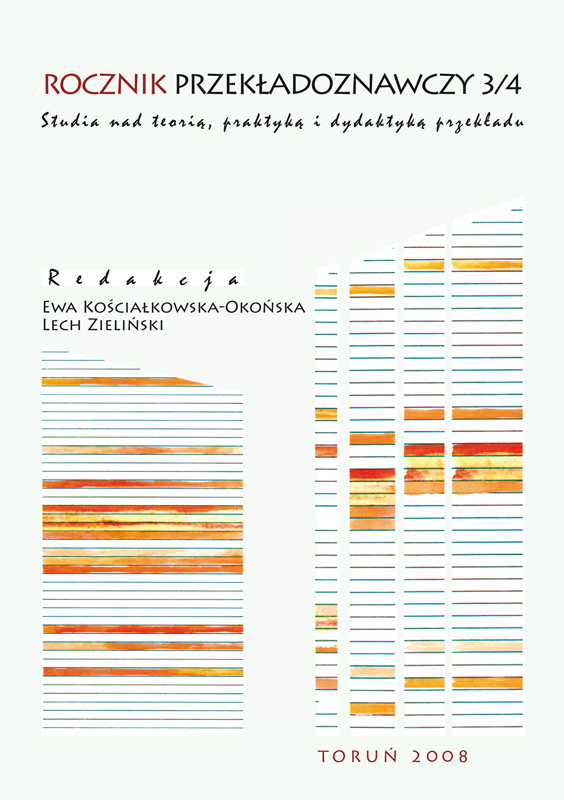Free software for a translator – myth or reality?
DOI:
https://doi.org/10.12775/RP.2008.014Keywords
CAT, computer-assisted translation, non-fully automatic translationAbstract
The main purpose of this paper is to describe and to review “free software” used for supporting language translation tasks. Comparison with commercial programs gives the answer whether “free software” is a valid alternative solution for translators and what its future development may look like. My definition of “free software”, a very broad one, is based on the availability of programs for translators and embraces categories such as open source, freeware and adware. The focus is not only on consolidated projects as, for instance, OmegaT or PlusTools but also on experimental web-based solutions such as NETS by Adriano Allora. The main part of the paper contains a detailed evaluation of the open source program OmegaT in comparison to Trados (SDL Trados 2007) and illustrates the rules and the mechanisms of Computer Assisted Translation in order to explain frequent misunderstandings that arise among beginner translators. What is particularly emphasized is the deep conceptual and technical difference between Machine Assisted Human Translation and Human Assisted Machine Translation. It is argued that, although open source and centralized web-based translation memories still present some disadvantages as compared to commercial systems, they are already fully functional substitutes for the powerful leading market solutions. The aim of this paper is also to motivate interest in CAT tools among translators so that they could actively take part in the future development of this kind of software as developers, programmers, testers, reviewers or technology-conscious users.
References
Allora, A., 2006, NETS, quando la traduzione assistita dal calcolatore incontra la linguistica, [w:] Proceedings XII Euralex International Congress, Alessandria, Edizioni dell’Orso.
Chmielowska-Rumpel, J., 2007, Wprowadzenie do elektronicznych systemów tłumaczących, http://www.staff .uni-mainz.de/rumpel/TMS-ILS-0503/ TMS-PL/tms-pl/(dostęp luty 2007).
Eckstein, M., Sosnowski, R., 2004, Komputer w pracy tłumacza. Praktyczny poradnik, Kraków.
Hejwowski, K., 2004, Kognitywno-komunikacyjna teoria przekładu, Warszawa.
Hutchins, W. J, Somers, H. L., 1992, An Introduction to Machine Translation, Roma-San Diego, Academic Press.
Osimo, B., 2001, Traduzione e nuove tecnologie. Informatica e internet per traduttori, Milano.
Pieńkos, J., 2003, Podstawy przekładoznawstwa, Kraków.
Pisarska, A., Tomaszkiewicz, T., 1996, Współczesne tendencje przekładoznawcze, Poznań.
Downloads
Published
Issue
Section
Stats
Number of views and downloads: 939
Number of citations: 0



